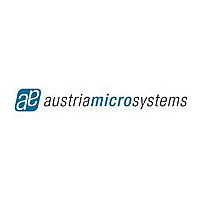AS5140H-ASSU austriamicrosystems, AS5140H-ASSU Datasheet - Page 33

AS5140H-ASSU
Manufacturer Part Number
AS5140H-ASSU
Description
ENCODER, MAGNETIC, ROTARY, 10BIT, 16SSOP
Manufacturer
austriamicrosystems
Datasheet
1.AS5140H-ASSU.pdf
(38 pages)
Specifications of AS5140H-ASSU
Brief Features
User Programmable Zero / Index Position, Failure Detection Mode
Supply Voltage Range
3V To 3.6V, 4.5V To 5.5V
Operating Temperature Range
-40°C To +150°C
Digital Ic Case
RoHS Compliant
Ic Function
10-bit Programmable Magnetic Rotary Encoder
Rohs Compliant
Yes
Available stocks
Company
Part Number
Manufacturer
Quantity
Price
Company:
Part Number:
AS5140H-ASSU
Manufacturer:
AMS
Quantity:
500
Company:
Part Number:
AS5140H-ASSU
Manufacturer:
NICCOMP
Quantity:
40 000
AS5140H
Data Sheet - D e t a i l e d D e s c r i p t i o n
Temperature
Magnetic Temperature Coefficient
One of the major benefits of the AS5140H, in comparison to linear Hall sensors is that it is much less sensitive to
temperature. While linear Hall sensors require a compensation of the magnet’s temperature coefficient, the AS5140H
automatically compensates for the varying magnetic field strength over temperature. The magnet’s temperature drift
does not need to be considered, as the AS5140H operates with magnetic field strengths from ±45…±75mT.
Example:
A NdFeB magnet has a field strength of 75mT @ -40ºC and a temperature coefficient of -0.12% per Kelvin. The
temperature change is from -40º to +150º = 190K. The magnetic field change is: 190 x -0.12% = -22.8%, which
corresponds to 75mT at -40ºC and 57.9mT at 150ºC.
In the above described scenario, the AS5140H can automatically compensate for the change in temperature related
field strength. No user adjustment is required.
Accuracy Over Temperature
The influence of temperature in the absolute accuracy is very low. While the accuracy is ≤ ±0.5º at room temperature,
it may increase to ≤±0.9º due to increasing noise at high temperatures.
Timing Tolerance Over Temperature
The internal RC oscillator is factory trimmed to ±5%. Over temperature, this tolerance may increase to ±10%.
Generally, the timing tolerance has no influence in the accuracy or resolution of the system, as it is used mainly for
internal clock generation. The only concern to the user is the width of the PWM output pulse, which relates directly to
the timing tolerance of the internal oscillator. This influence however can be cancelled by measuring the complete
PWM duty cycle
www.austriamicrosystems.com
resulting value also has this timing tolerance. However, this tolerance can be cancelled by measuring both T
T
off
and calculating the angle from the duty cycle
(see Internal Timing Tolerance on page
Position =
(see Pulse Width Modulation (PWM) Output on page
Revision 1.1
------------------------ - 1
(
t
t
on
on
32).
⋅
+
1025
t
off
)
–
17):
on
33 - 38
(EQ 9)
and













